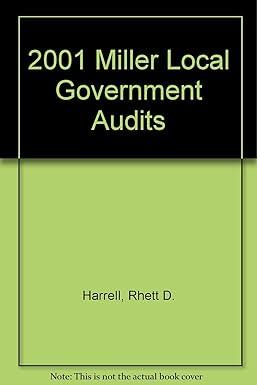Question
7. Berkeley Water Woman Smoanes is a brilliant but little-known inventor, engineer, and denizen of oddly-shaped, self-designed housing in northern California. Concerned with the environmental
7. Berkeley "Water Woman" Smoanes is a brilliant but little-known inventor, engineer, and denizen of oddly-shaped, self-designed housing in northern California. Concerned with the environmental degradation she sees around her, she has put her mind to the problem of supplying the Golden State's burgeoning population and high-tech economy with abundant and cheap power. Instead of looking to expand the traditional large power infrastructure, Water Woman has decided to focus on creating local, decentralized power capacity, specifically in the form of fuel cells. Although the idea of fuel cells (which combine hydrogen and oxygen to create water and heat) is an old one, technical problems have prevented them from being widely adopted as an energy source. Water Woman has solved these problems to an extent that she thinks she can manufacture and sell fuel cells to power individual buildings, thus largely solving California's power problems (and generating extra water as well).
While technically brilliant, Berkeley is not an astute businesswoman. She needs some advice on where to situate her manufacturing plant. She has identified two possible factory sites in California, both of which have different costs and benefits.
The first site is in the San Francisco Bay region, in the city of Alameda. It has the advantages of relatively easy access to a skilled labor market, good transportation infrastructure, and a readily available test market. However, it is also costly in terms of land and labor, and incurs high taxes. It is also a place where water is in short supply. Her production process is water-intensive, so this is an issue. However, if Berkeley can find a site on the shore, she can desalinate her own water. This will be an additional capital expense.
The second site is in Eureka, about a four-hour drive north of San Francisco. The labor market here is not as skilled, the transportation infrastructure is not as good, nor is the test market as favorable, Eureka not possessing a very diversified economy. Labor is lower cost, although skilled labor is more difficult to come by. Taxes are lower, however, and while water is not exactly abundant, it is more readily available than at the Alameda site, and no desalination plant would be necessary. Both sites are equally attractive to Berkeley's personal cultural orientation.
The data for each site is indicated in Table 1 below. Note that the values given are in NOMINAL terms, and the expected rate of inflation is 1.5% per annum. The REAL RATE OF DISCOUNT is 8%. The project horizon: one year start up; 30 years operation.
Based on this information, construct a KHT for Each Location. The Tableau has two stakeholders: Water Women and the Government. Enter present values for each cost indicated in table 2 under the headers: Fixed Cost and Operating Cost, as shown in Table 1. Make the shadow pricing assumption that gross revenues=benefits (max wtp); thus, the benefit falls on Water Woman. Based on the two KHTs, answer the questions posed in the answer sheet.
This is the answer sheet. Thank you
NPV from Private (Water Woman) Perspective:
Almeda________________ (2)
Eureka _________________ (2)
NPV from Government perspective:
Almeda________________ (2)
Eureka _________________ (2)
NPV from Societal (Net Perspective)
Almeda________________ (2)
Eureka ________________ (2)
| Alameda Location | Eureka Location | |
| Fixed Costs (incurred year 1, unless otherwise noted) | ||
| Land | 2,250,000 | 800,000 |
| Buildings | 800,000 | 450,000 |
| Production Equipment | 900,000 | 900,000 |
| Desalination Plant | 750,000 | Not Needed |
| Additional equipment in year 3 | 850,000 | 650,000 |
| Building expansion in year 3 | 850,000 | 800,000 |
| Additional land in year 3 | 4,700,000 | 2,200,000 |
| Variable Costs (2-31) (incurred annually, NOMINAL VALUES) | ||
| Utility cost (power, water, gas) | 75,000 | 45,000 |
| Transportation | 110,000 | 210,000 |
| Labor | 555,000 | 250,000 |
| Local Tax | 10% of gross revenue | 5% of gross revenue |
| Production inputs (metals, solvents, other stuff) | 1,750,000 | 2,200,000 |
| Annual Revenue (2-31), INCURRED YEARLY, NOMINAL | 6,500,000 | 5,000,000 |
Step by Step Solution
There are 3 Steps involved in it
Step: 1

Get Instant Access to Expert-Tailored Solutions
See step-by-step solutions with expert insights and AI powered tools for academic success
Step: 2

Step: 3

Ace Your Homework with AI
Get the answers you need in no time with our AI-driven, step-by-step assistance
Get Started


